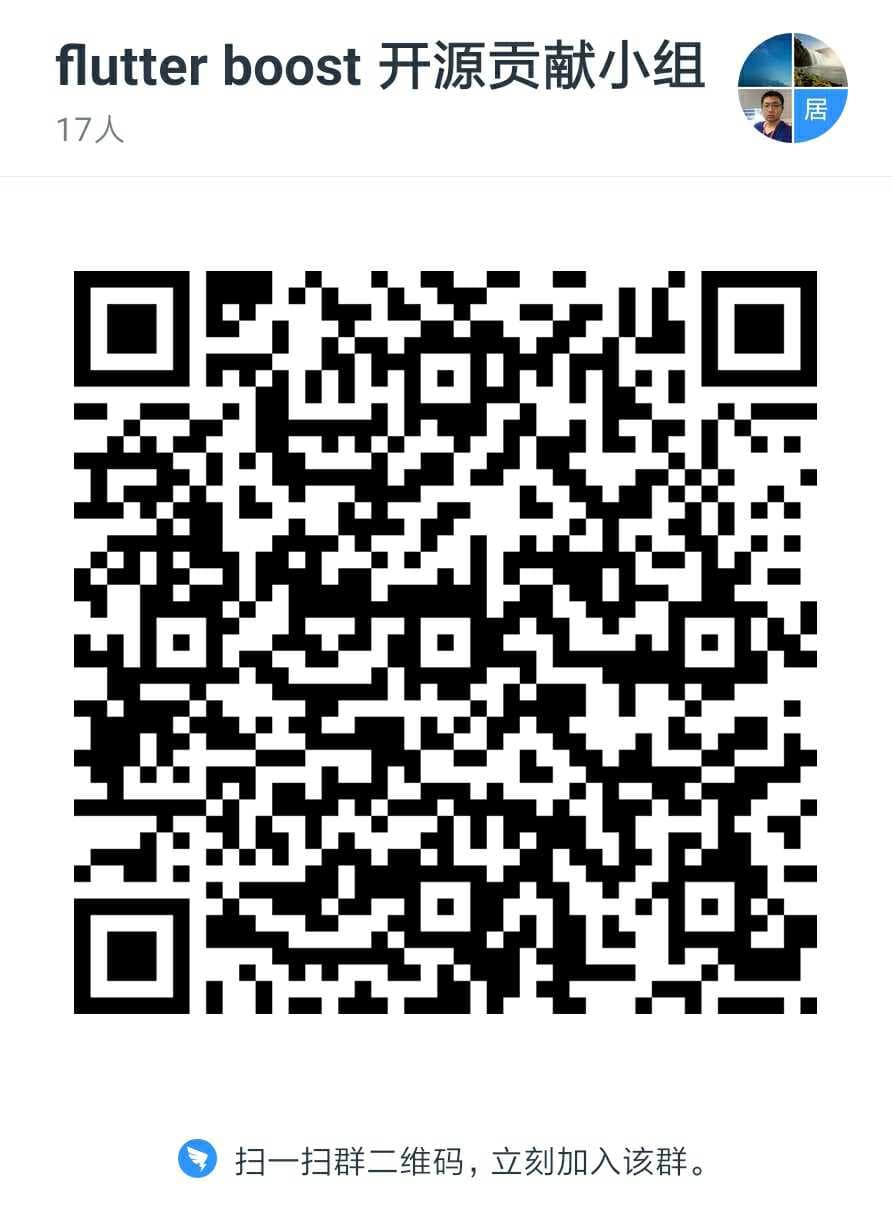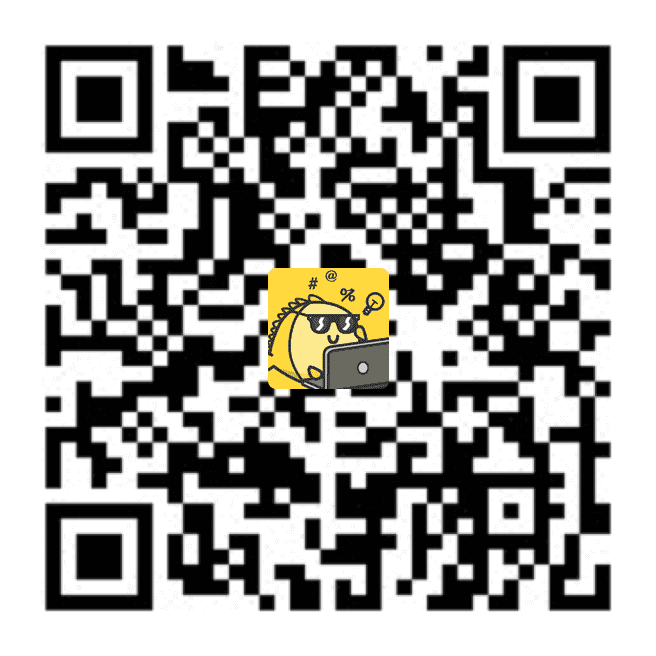Release Note
Please checkout the release note for the latest 0.1.61 to see changes 0.1.61 release note
FlutterBoost
A next-generation Flutter-Native hybrid solution. FlutterBoost is a Flutter plugin which enables hybrid integration of Flutter for your existing native apps with minimum efforts.The philosophy of FlutterBoost is to use Flutter as easy as using a WebView. Managing Native pages and Flutter pages at the same time is non-trivial in an existing App. FlutterBoost takes care of page resolution for you. The only thing you need to care about is the name of the page(usually could be an URL).
Prerequisites
You need to add Flutter to your project before moving on.The version of the flutter SDK requires v1.9.1+hotfixes, or it will compile error.
Getting Started
Add a dependency in you Flutter project.
Open you pubspec.yaml and add the following line to dependencies:
support branch
flutter_boost:
git:
url: 'https://github.com/alibaba/flutter_boost.git'
ref: '0.1.61'androidx branch
flutter_boost:
git:
url: 'https://github.com/alibaba/flutter_boost.git'
ref: 'feature/flutter_1.9_androidx_upgrade'Integration with Flutter code.
Add init code to you App
void main() {
runApp(MyApp());
}
class MyApp extends StatefulWidget {
@override
_MyAppState createState() => _MyAppState();
}
class _MyAppState extends State<MyApp> {
@override
void initState() {
super.initState();
FlutterBoost.singleton.registerPageBuilders({
'first': (pageName, params, _) => FirstRouteWidget(),
'second': (pageName, params, _) => SecondRouteWidget(),
'tab': (pageName, params, _) => TabRouteWidget(),
'platformView': (pageName, params, _) => PlatformRouteWidget(),
'flutterFragment': (pageName, params, _) => FragmentRouteWidget(params),
'flutterPage': (pageName, params, _) {
print("flutterPage params:$params");
return FlutterRouteWidget(params:params);
},
});
}
@override
Widget build(BuildContext context) {
return MaterialApp(
title: 'Flutter Boost example',
builder: FlutterBoost.init(postPush: _onRoutePushed),
home: Container());
}
void _onRoutePushed(
String pageName, String uniqueId, Map params, Route route, Future _) {
}
}Integration with iOS code.
Note: You need to add libc++ into "Linked Frameworks and Libraries"
objective-c:
Use FLBFlutterAppDelegate as the superclass of your AppDelegate
@interface AppDelegate : FLBFlutterAppDelegate <UIApplicationDelegate>
@endImplement FLBPlatform protocol methods for your App.
@interface PlatformRouterImp : NSObject<FLBPlatform>
@property (nonatomic,strong) UINavigationController *navigationController;
@end
@implementation PlatformRouterImp
#pragma mark - Boost 1.5
- (void)open:(NSString *)name
urlParams:(NSDictionary *)params
exts:(NSDictionary *)exts
completion:(void (^)(BOOL))completion
{
BOOL animated = [exts[@"animated"] boolValue];
FLBFlutterViewContainer *vc = FLBFlutterViewContainer.new;
[vc setName:name params:params];
[self.navigationController pushViewController:vc animated:animated];
if(completion) completion(YES);
}
- (void)present:(NSString *)name
urlParams:(NSDictionary *)params
exts:(NSDictionary *)exts
completion:(void (^)(BOOL))completion
{
BOOL animated = [exts[@"animated"] boolValue];
FLBFlutterViewContainer *vc = FLBFlutterViewContainer.new;
[vc setName:name params:params];
[self.navigationController presentViewController:vc animated:animated completion:^{
if(completion) completion(YES);
}];
}
- (void)close:(NSString *)uid
result:(NSDictionary *)result
exts:(NSDictionary *)exts
completion:(void (^)(BOOL))completion
{
BOOL animated = [exts[@"animated"] boolValue];
animated = YES;
FLBFlutterViewContainer *vc = (id)self.navigationController.presentedViewController;
if([vc isKindOfClass:FLBFlutterViewContainer.class] && [vc.uniqueIDString isEqual: uid]){
[vc dismissViewControllerAnimated:animated completion:^{}];
}else{
[self.navigationController popViewControllerAnimated:animated];
}
}
@endInitialize FlutterBoost with FLBPlatform at the beginning of your App, such as AppDelegate.
PlatformRouterImp *router = [PlatformRouterImp new];
[FlutterBoostPlugin.sharedInstance startFlutterWithPlatform:router
onStart:^(FlutterEngine *engine) {
}];swift:
init
@UIApplicationMain
@objc class AppDelegate: FlutterAppDelegate {
override func application(
_ application: UIApplication,
didFinishLaunchingWithOptions launchOptions: [UIApplicationLaunchOptionsKey: Any]?
) -> Bool {
let router = PlatformRouterImp.init();
FlutterBoostPlugin.sharedInstance()?.startFlutter(with: router, onStart: { (engine) in
});
self.window = UIWindow.init(frame: UIScreen.main.bounds)
let viewController = ViewController.init()
let navi = UINavigationController.init(rootViewController: viewController)
self.window.rootViewController = navi
self.window.makeKeyAndVisible()
return true;//super.application(application, didFinishLaunchingWithOptions: launchOptions)
}
}Implement FLBPlatform protocol methods for your App.
class PlatformRouterImp: NSObject, FLBPlatform {
func open(_ url: String, urlParams: [AnyHashable : Any], exts: [AnyHashable : Any], completion: @escaping (Bool) -> Void) {
var animated = false;
if exts["animated"] != nil{
animated = exts["animated"] as! Bool;
}
let vc = FLBFlutterViewContainer.init();
vc.setName(url, params: urlParams);
self.navigationController().pushViewController(vc, animated: animated);
completion(true);
}
func present(_ url: String, urlParams: [AnyHashable : Any], exts: [AnyHashable : Any], completion: @escaping (Bool) -> Void) {
var animated = false;
if exts["animated"] != nil{
animated = exts["animated"] as! Bool;
}
let vc = FLBFlutterViewContainer.init();
vc.setName(url, params: urlParams);
navigationController().present(vc, animated: animated) {
completion(true);
};
}
func close(_ uid: String, result: [AnyHashable : Any], exts: [AnyHashable : Any], completion: @escaping (Bool) -> Void) {
var animated = false;
if exts["animated"] != nil{
animated = exts["animated"] as! Bool;
}
let presentedVC = self.navigationController().presentedViewController;
let vc = presentedVC as? FLBFlutterViewContainer;
if vc?.uniqueIDString() == uid {
vc?.dismiss(animated: animated, completion: {
completion(true);
});
}else{
self.navigationController().popViewController(animated: animated);
}
}
func navigationController() -> UINavigationController {
let delegate = UIApplication.shared.delegate as! AppDelegate
let navigationController = delegate.window?.rootViewController as! UINavigationController
return navigationController;
}
}Integration with Android code.
Init FlutterBoost in Application.onCreate()
public class MyApplication extends Application {
@Override
public void onCreate() {
super.onCreate();
INativeRouter router =new INativeRouter() {
@Override
public void openContainer(Context context, String url, Map<String, Object> urlParams, int requestCode, Map<String, Object> exts) {
String assembleUrl=Utils.assembleUrl(url,urlParams);
PageRouter.openPageByUrl(context,assembleUrl, urlParams);
}
};
FlutterBoost.BoostLifecycleListener lifecycleListener= new FlutterBoost.BoostLifecycleListener() {
@Override
public void onEngineCreated() {
}
@Override
public void onPluginsRegistered() {
MethodChannel mMethodChannel = new MethodChannel( FlutterBoost.instance().engineProvider().getDartExecutor(), "methodChannel");
Log.e("MyApplication","MethodChannel create");
TextPlatformViewPlugin.register(FlutterBoost.instance().getPluginRegistry().registrarFor("TextPlatformViewPlugin"));
}
@Override
public void onEngineDestroy() {
}
};
Platform platform= new FlutterBoost
.ConfigBuilder(this,router)
.isDebug(true)
.whenEngineStart(FlutterBoost.ConfigBuilder.ANY_ACTIVITY_CREATED)
.renderMode(FlutterView.RenderMode.texture)
.lifecycleListener(lifecycleListener)
.build();
FlutterBoost.instance().init(platform);
}
}Basic Usage
Concepts
All page routing requests are being sent to the native router. Native router communicates with Native Container Manager, Native Container Manager takes care of building and destroying of Native Containers.
Use Flutter Boost Native Container to show a Flutter page in native code.
iOS
FLBFlutterViewContainer *vc = FLBFlutterViewContainer.new;
[vc setName:name params:params];
[self.navigationController presentViewController:vc animated:animated completion:^{}];However, in this way, you cannot get the page data result after the page finished. We suggest you implement the platform page router like the way mentioned above. And finally open/close the VC as following:
//push the page
[FlutterBoostPlugin open:@"first" urlParams:@{kPageCallBackId:@"MycallbackId#1"} exts:@{@"animated":@(YES)} onPageFinished:^(NSDictionary *result) {
NSLog(@"call me when page finished, and your result is:%@", result);
} completion:^(BOOL f) {
NSLog(@"page is opened");
}];
//prsent the page
[FlutterBoostPlugin open:@"second" urlParams:@{@"present":@(YES),kPageCallBackId:@"MycallbackId#2"} exts:@{@"animated":@(YES)} onPageFinished:^(NSDictionary *result) {
NSLog(@"call me when page finished, and your result is:%@", result);
} completion:^(BOOL f) {
NSLog(@"page is presented");
}];
//close the page
[FlutterBoostPlugin close:yourUniqueId result:yourdata exts:exts completion:nil];Android
public class PageRouter {
public final static Map<String, String> pageName = new HashMap<String, String>() {{
put("first", "first");
put("second", "second");
put("tab", "tab");
put("sample://flutterPage", "flutterPage");
}};
public static final String NATIVE_PAGE_URL = "sample://nativePage";
public static final String FLUTTER_PAGE_URL = "sample://flutterPage";
public static final String FLUTTER_FRAGMENT_PAGE_URL = "sample://flutterFragmentPage";
public static boolean openPageByUrl(Context context, String url, Map params) {
return openPageByUrl(context, url, params, 0);
}
public static boolean openPageByUrl(Context context, String url, Map params, int requestCode) {
String path = url.split("\\?")[0];
Log.i("openPageByUrl",path);
try {
if (pageName.containsKey(path)) {
Intent intent = BoostFlutterActivity.withNewEngine().url(pageName.get(path)).params(params)
.backgroundMode(BoostFlutterActivity.BackgroundMode.opaque).build(context);
context.startActivity(intent);
} else if (url.startsWith(FLUTTER_FRAGMENT_PAGE_URL)) {
context.startActivity(new Intent(context, FlutterFragmentPageActivity.class));
return true;
} else if (url.startsWith(NATIVE_PAGE_URL)) {
context.startActivity(new Intent(context, NativePageActivity.class));
return true;
} else {
return false;
}
} catch (Throwable t) {
return false;
}
return false;
}
}Use Flutter Boost to open a page in dart code.
Dart
FlutterBoost.singleton
.open("pagename")
Use Flutter Boost to close a page in dart code.
FlutterBoost.singleton.close(uniqueId);
Running the Demo
Please see the example for details.
License
This project is licensed under the MIT License - see the LICENSE.md file for details
Problem feedback group( dingding group)
关于我们
阿里巴巴-闲鱼技术是国内最早也是最大规模线上运行Flutter的团队。
我们在公众号中为你精选了Flutter独家干货,全面而深入。
内容包括:Flutter的接入、规模化应用、引擎探秘、工程体系、创新技术等教程和开源信息。
架构/服务端/客户端/前端/算法/质量工程师 在公众号中投递简历,名额不限哦
欢迎来闲鱼做一个好奇、幸福、有影响力的程序员,简历投递:[email protected]
订阅地址



